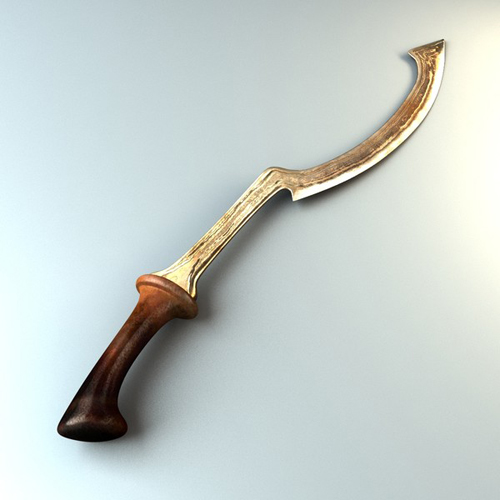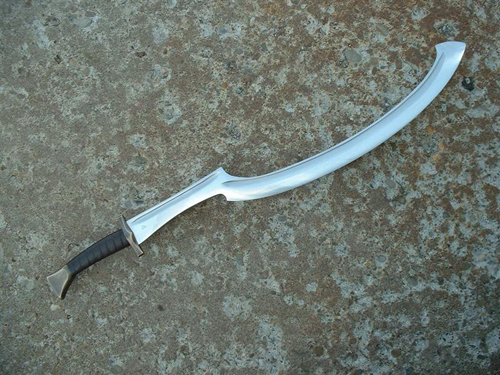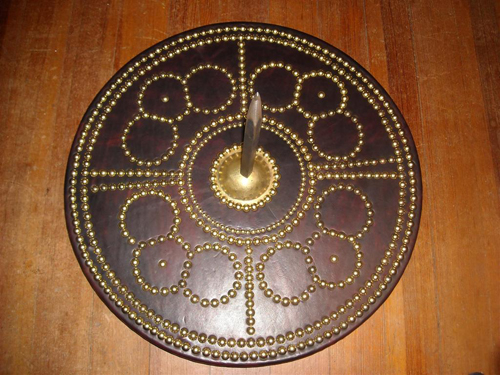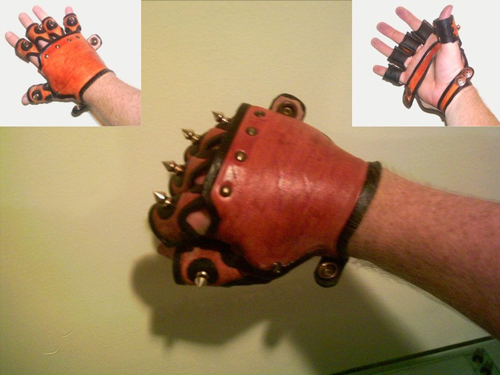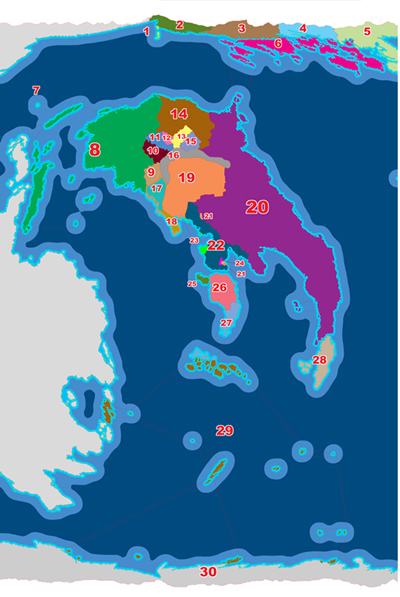Sorry for the delay in making a new post, but this one took a lot of time to get the website ready to support it. I had to track down all the clerical domains and copy paste them, etc. and make all the pages for the deities (boring and repetitive!). Most of my design notes consist of spreadsheets with notes, comments, etc. so it takes a while to write it down in a presentable format. So, with that out of the way, on with today’s post
When designing my pantheon for the setting I started out by deciding what I needed out of it I came up with three criteria
- I wanted a single pantheon with room for sectarian conflict
- I wanted it to have a different feel than the usual male-centric pantheons
- I wanted it to have some internal consistency
So I went looking for some inspiration (i.e I started looking up deities, etc on Wikipedia). I found the Egyptian pantheon had all the necessary ingredients, so I started researching the various deities of that mythos.
I worked out the various deities and their relationships with one another and their relevant spheres of interest, building a family tree and clerical domains, etc. and so had my pantheon. Except for the names. I didn’t want to use the original names because that would have carried too much baggage and would have inclined players to think in terms of a pharoanic setting rather than the high middle ages feel I wanted, so I had to rename them all. This step stumped me for a while till I noticed that a lot of the Wikipedia entries had an etymology section, giving the meanings of the Egyptian deities’ names. So I researched all the deities, getting the meanings of their names (I had to make up a few of them), simplified them, and then using Google Translate I translated them into a modern language (in this case Albanian, because that is the language I chose as the basis for the Uhasu in the Knovdark) and then ran them through the Chaotic Shiny Language Mixer app (using the Sibilant2 converter), and then used a little fudging to get the final names. Some of the names were sort of silly, but I figured that if we could accept deities named Obad-Hai and Weejas, we could accept a deity named È.
As explained in an earlier post, there are no separate temple networks dedicated to individual deities, but rather all temples are dedicated to the pantheon as a whole, with prayers offered up to whichever deity or deities are appropriate for the occasion.
The gods of the Yazilìan pantheon each have a particular sacred animal, and they are represented in three forms:
- As the animal itself, which is the form preferred by the Ìasite church.
- As an anthropomorphic (or orcomorphic) version of the animal, which is the preferred form among the Nuekìnar.
- As a human (or elf, or centaur, or dwarf, etc.) with the head of that animal.
List of deities sorted by rank (a more detailed listing including domains is on the website):
THE GODS OF TÒLANAR
SUPREME DEITY
YAZILÌA
[ya-zil-AI-ah]
Yazilìa, whose name is derived from a root meaning “Opener”, is the supreme deity, the creator of the universe, and the particular patron of all craftsmen. His sacred animal is the lion.
QUASI-DEITIES
SUSUÙR (DEIFIED ATTRIBUTES OF THE SÈAUSU)
These entities are not actively worshipped and are more theological concepts than actual deities. They are always portrayed as pairs, a male and female aspect of the attributes of the primordial chaos out of which the universe was created. The males all have the frog as their animal and the females all have the eel. While each couple is associated with one of the four primal deities, and are referred to as the parents of that deity, this is an allegorical sort of parenthood. They are, in alphabetical order:
1. RÖIS & RUSU [ROO-is & RUH-suh]: Their names are derived from roots meaning “Hidden” or “Unseen”and they represent the hidden nature of the Sèausu, its invisibility and unknowableness. They are said to be the parents of Ìasu.
2. SUS & USURÙ [SUHS & UH-suh-ryu]: These two, whose names are derived from roots meaning “Darkness” represent the formless and lightless nature of the primordial chaos. They are considered to be the parents of Ursur
3. ŤURSILU & SURSU [thuhr-SIL-uh & SUHR-suh]: These two, whose names are derived from roots meaning “Matter” represent the primordial “waters” of the chaos, the pre-matter out of which the universe was formed. They are considered the parents of Sìas.
4. ZÈÌSURÙ & ZUSILSURÙ [zee-AI-suh-ruh & zuh-SIL-suh-ryu]: These two, whose names are derived from roots meaning “Endless” represent the eternal and infinite nature of the universe and the primordial chaos out of which it sprang. They are considered the parents of Ùs.
GREATER DEITIES
There are four greater deities in the Yazilìan pantheon, they are the first deities and the progenitors of all the others.
ÌASU
[AI-ah-suh]
Ìasu, whose name is derived from a root meaning “Gladness”, is the acknowledged male ancestor of all the gods, he is also a god of fresh water (rivers, springs, etc), youth, creativity, and the patron of potters. His animal is the goat. The Ìasite sect believes he was the firstborn of the gods and that he is the reigning deity.
IRHILÙRU
[ir-HIL-yu-ruh]
Irhilùru, whose name is derived from a root meaning “nursing” is a goddess of the harvest. Her animal is the python. The Irhilùrite sect believes that she is the reigning deity
SÌAS
[SAI-ass]
Sìas, whose name is derived from a root meaning “Sprouting”, is one of the three primal mother goddesses. She is a goddess of animal fertility (specifically of wildlife), hunting (in the sense of the chase), patriotism, siege warfare, and the granter of wishes. Her animal is the gazelle. The Irhilùrite and Syasuan Szasite sects believe she was the first born of the three great mother goddesses.
SUÙŠ
[SUH-yush]
Suùš, whose name is derived from a root meaning “Sun”, is a god of the sun, warmth, rulership and governance in general. He is the patron of kings and the creator of Relkìanèr (humans). The heron is his animal. The two Suùšite sects (Ecumenical & Autocephalous) believe that he is the reigning deity.
Parents: Ìasu & Ursur
Consorts & offspring
With Filusus: Sìasfus, Hušù, Zèrsus, Rusèur, Sazu, Nèasurù, and Ruru
Domains: Alignment, Community, Creation, Domination, Law, and Sun.
SZASU
[SZAH-suh]
Szasu, whose name is derived from a root meaning “Complete”, is a god of creation and entropy, and also the setting sun. His animal is the mongoose. The Ùsian Szasite and Syasuan Szasite sects beklieve he is the reigning deity.
URSUR
[UHR-suhr]
Ursur, whose name is derived from a root meaning “Weaver”, is one of the three primal mother goddesses. She is the goddess of fate, forbidden or arcane knowledge, archery and hunting (of the ambush sort), war (specifically strategy and missile troops), and the patron of both weavers and weaponsmiths. Her animal is the spider. The two Suùšite sects (Ecumenical & Autocephalous) believe she was the firstborn of the gods.
ÙS
[YUS]
Ùs, whose name is derived from a root meaning “Year”, is one of the three primal mother goddesses. She is the goddess of time. Her animal is the tortoise. She is believed to be the firstborn of the gods by the Ùsian Szasite sect.
INTERMEDIATE DEITIES
È
[EE]
È, whose name is derived from a root meaning “Dwarf”, is a god of luck, good, the arts, fertility, and the protector of households (particularly mothers and children). He is also the creator of the Ralurì (dwarves) and the Nìrurikì (halflings). His animal is the raven.
ÈHÙRUN
[ee-hyu-ruhn]
Èhùrun, whose name is derived from a root meaning “Powerful”, is a god of life, death, resurrection, and the afterlife. His animal is the phoenix.
HRÙSUS
[hur-YU-suhs]
Hrùsus, whose name is derived from a root meaning “Falcon”, is a god of the daytime sky, defensive war, retribution, and protection from enemies. The falcon is his animal.
HÙHUS
[hyu-HUHS]
Hùhus, whose name is derived from a root meaning “Sky”, is a goddess of the stars and the night sky. Her animal is the goose.
HURSRUN
[HUHR-sruhn]
Hursrun, whose name is derived from a root meaning “Beautiful”, is a goddess of healing and natural beauty, particularly flowering plants. Her animal is the humming bird.
HUŤUSAR
[HUH-thuh-sahr]
Huťusar, whose name is derived from a root meaning “Existing”, is a god insects, the rising sun, and also of the rebirth of the spirit in the afterlife. His animal is the scarab beetle.
ÌA
[AI-ah]
Ìa, whose name is derived from a root meaning “Recompense”, is a god of storms, deserts, chaos, foreigners, war (specifically ambushes). He is also considered the progenitor of the Nuekìnar. His animal is the jackal.
IŠURÙ
[ISH-uh-ryu]
Išurù, whose name is derived from a root meaning “Wisdom”, is a god of wisdom, knowledge, written magic and the sciences. His animal is the ibis.
RUSÈUR
[RUH-see-uhr]
Rusèur, whose name is derived from a root meaning “Healer”, is a goddess of physical pleasure, dance, and the sexual aspects of love. She is also the protector of lovers. Her animal is the cat.
SAHU
[SAH-huh]
Sahu, whose name is derived from a root meaning “Earth” is a god of the earth and soil, as well as the patron of brewers. The gnu is his animal
SAR
[SAHR]
Sar, whose name is derived from a root meaning “Throne”, is a goddess of health, marriage, romantic love, and primordial magic. She is also the patroness of royalty. Her animal is the meercat.
SAZU
[SAH-zuh]
Sazu, whose name is derived from a root meaning “Cow”, is a goddess of beauty, fertility (particularly in females), familial happiness, maternal love, and pregnancy. She is also the protector of non-believers. The cow is her animal.
SÌASFUS
[SAI-ahs-fuhs]
Sìasfus, whose name is derived from a root meaning “Distant”, is a god of war, the particular patron of armies and soldiers. His animal is the cheetah.
SYAUS
[syah-UHS]
Syaus, whose name is derived from a root meaning “Emptiness”, is a god of the air, calmness, peace, and moral balance. His animal is the albatross.
UNYASRIS
[uhn-YAHS-ris]
Unyasris, whose name is derived from a root meaning “Unifier”, is a god of agriculture, fertility (of crops), healing (of diseases), hunger, robbers, wealth, and war (specifically military prowess and the granter of victory). He is also the god of protective wards of all types. His animal is the crocodile.
ZÈRSUS
[ZEER-suhs]
Zèrsus, whose name is derived from a root meaning “Power”, is a goddess of war (particularly leaders and leadership in war), healing (of wounds), and the protector of leaders and rulers. Her animal is the lioness.
ZÙSUSURU
[zyu-SUH-suh-ruh]
Zùsusuru, whose name is derived from a root meaning “Priestess”, is a goddess of grief and mourners, service, laments and the night. Her animal is the kite.
LESSER DEITIES
ÈRSUS
[EER-sus]
Èrsus, whose name is derived from a root meaning “Bitch”, in the sense of a female dog, is a goddess of dead, specifically a protector of the dead and against undead. She is the female counterpart of the god Hur. Her animal is the she-wolf.
FASÙHU
[fah-SYU-huh]
Fasùhu, whose name is derived from a root meaning “Jaws”, is a goddess of grain and agriculture. She is the female counterpart of the god Faťur. The raven is her animal.
FAŤUR
[FAH-thur]
Faťur, whose name is derived from a root meaning “Jaws”, is a god of grain and agriculture. He is the male counterpart of the goddess of Fasùhu. The raven is his animal.
FILÙRINSRU
[fil-yu-RIN-sruh]
Filùrinsru, whose name is derived from a root meaning “Awakening”, is a goddess of magic. She is the female counterpart of the god Fùn. Her animal is the dragon.
FILUSUS
[FIL-uh-suhs]
Filusus, whose name is derived from a root meaning “Green”, is a goddess of fire and the protector of priests, kings, nations and women in childbirth. Her animal is the cobra.
FÙN
[FYUN]
Fùn, whose name is derived from a root meaning “Awakening”, is a god of magic. He is the male counterpart of the goddess Filùrinsru. Her animal is the dragon.
HAZARZ
[hah-zahrz]
Hazarz, whose name is derived from a root meaning “Garden”, is a goddess of spring. Her animal is the pheasant.
HRÌARSAS
[hrai-ahr-sahs]
Hrìarsas, whose name is derived from a root meaning “Slitherer”, is a god of chaos, deceit, lies, and the sea. His animal is the sea serpent.
HUR
[HUHR]
Hur, whose name is derived from a root meaning “Dog”, is a god of dead, specifically a protector of the dead and against undead. He is the male counterpart of the goddess Èrsus. His animal is the wolf.
HUŠÙ
[huh-SHYU]
Hušù whose name is derived from a root meaning “Massacre”, is a goddess of death and war, said to inspire slaughters and massacres. Her animal is the tiger.
ISUSÌAS
[ih-SUH-sai-as]
Isusìas, whose name is derived from a root meaning “Traveler”, is a god of the moon, travel and travelers, and also presides over births (seen as a journey into life). His animal is the crane.
IŠUSÙ
[ISH-uh-syu]
Išusù, whose name is derived from a root meaning “Virility”, is a god of fertility, specifically in males. He is considered the progenitor of the Edheledur (elves). His animal is the stallion.
IŤU
[IH-thuh]
Iťu, whose name is derived from a root meaning “Water”, is a goddess of water in the form of rain or dew. Her animal is the duck.
NÈASURÙ
[nee-AH-suh-ryu]
Nèasurù, whose name is derived from a root meaning “Greatness”, is a goddess of fertility in people and childbirth. Her animal is the rat.
RURU
[RUH-ruh]
Ruru, whose name is derived from a root meaning “Mother”, is a goddess of motherhood the nurturing or mothering aspects of families. Her animal is the bear.
RÙZUS
[RYU-zuhs]
Rùzus, whose name is derived from a root meaning “Above”, is a god of light, freedom, and summoning magic. The eagle is his animal.
SYASU
[SYAH-suh]
Syasu, whose name is derived from a root meaning “Emerging”, is a goddess of shadows, trees and mothers who have lost their children. Her animal is the vulture.
URÙHUSÙ
[uh-ryu-HUH-suh]
Urùhusù, whose name is derived from a root meaning “Loyalty”, is a god of the swords and swordsmen, and is also the punisher of the guilty and protector of the innocent
UŠUSU
[USH-uh-suh]
Ušusu, whose name is derived from a root meaning “Truth”, is a goddess of truth, balance, harmony, the law, justice, morality, and social order. Her animal is the Owl.
YANU
[YAH-nuh]
Yanu, whose name is derived from a root meaning “Luster”, is the god of smiths and craftsmen. His animal is the bull.
ZUŠYAURÙ
[ZUSH-yah-uh-ryu]
Zušyaurù, whose name is derived from a root meaning “Embrace”, is a goddess of rivers, and islands. The hippopotamus is her animal.
DEMIGODS
ARŤU
[AHR-thuh]
Arťu, whose name is derived from a root meaning “Lady”, is a goddess of stealth and thieves. The puma is her animal.
HRISYUR
[HURIS-yuhr]
Hrisyur, whose name is derived from a root meaning “Scribe”, is a goddess of scribes, learning, and the hard sciences) architecture, astronomy, mathematics, surveying, etc.). His animal is the swan.
HURFUSÈUS
[huhr-FUH-see-uhs]
Hurfusèus, whose name is derived from a root meaning “Musician”, is a god of music and song. His animal is the canary.
HUSURÙ
[huh-SUH-ryu]
Husurù, whose name is derived from a root meaning “Silence”, is a god of executions, mounted warfare, blood, oils, wine, and perfumes. His animal is the leopard.
ISUÙ
[ih-SUH-yu]
Isuù, whose name is derived from a root meaning “Guide”, is a god of secrets, war (specifically scouts & reconnaissance), spies , and espionage. His animal is the hyena.
NUSÌAS
[NUH-sai-as]
Nusìas, whose name is derived from a root meaning “Tact”, is a god of purification and cleanliness, and also of the south. His animal is the rhinoceros.
RURUSURAS
[ruh-ruh-SUH-rahs]
Rurusuras, whose name is derived from a root meaning “Health”, is a goddess of protection against diseases and poisons. Her animal is a two-headed snake.
SAILSÈAS
[sah-il-SEE-as]
Sailsèas, whose name is derived from a root meaning “Preserver”, is a goddess who is concerned with preservation, particularly of the soul. Her animal is the elephant.
SÌAHÈUR
[sai-ah-HEE-uhr]
Sìahèur, whose name is derived from a root meaning “Racer”, is a god of cold and the North. His animal is the fox.
SILNU
[sil-NUH]
Silnu, whose name is derived from a root meaning “Breath”, is a goddess of venom and all things poisonous and protection against them. She is also the goddess of the undead. The scorpion is her animal.
SURHYUR
[SUHR-huy-uhr]
Surhyur, whose name is derived from a root meaning “Refreshing”, is a god of lust, greed, and the west. His animal is the secretary bird.
YASISÙN
[yah-SIS-yun]
Yasisùn, whose name is derived from a root meaning “Adoration”, is a god of the east, hunger, starvation and the patron of hopeless love. His animal is the baboon.
ZRUSU
[ZRUH-suh]
Zrusu, whose name is derived from a root meaning “Cave”, is the god of dreams, demons, and the protector of sleepers and tombs. His animal is the sphinx.





